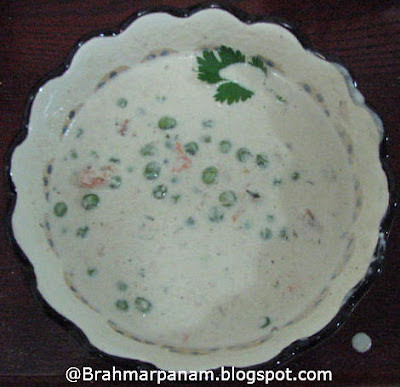Rennet in Cheese
Source:Rennet
Rennet is a complex of enzymes produced in any mammalian stomach, and is often used in the production of cheese. Rennet contains many enzymes that coagulates the milk, causing it to separate into solids (curds) and liquid (whey). They are also very important in the stomach of young mammals as they digest their mothers' milk. The main source of rennet is extracted from the inner mucosa of the fourth stomach chamber of slaughtered young, unweaned calves. Every year, millions of calves endure terribly inhumane factory farm conditions for their short lives, before being executed in ghastly slaughterhouses for their tender flesh.
However there is a good news for vegetarian cheese lovers. There are microbial / plant sources for rennet too but we have to check the labels when we buy the cheese. If doubtful I would rather go to the Indian stores and buy the good old Amul cheese or make Paneer (cottage cheese) at home.
Carrageenan: A very common, but Dangerous Additive
Source: Carrageenan
Carrageenan is a natural carbohydrate (polysaccharides) obtained from edible red seaweeds. There are two types of carrageenan including undegraded and degraded. Undegraded or food-grade carrageenan is used in food production as a thickening agent, an emulsifying agent and a stabilizing agent. Degraded carrageenan is hydrolyzed with acid and is not permitted for use in food production because it is a known Carcinogen(Cancer causing agent).
Carrageenan is used in many dairy products such as cream cheese, cottage cheese, skim milk, half&half, cream and yogurt as well as desserts and sweets such as custards, ice cream, milk shakes, pie fillings and chocolate products. Carrageenan is also used in salad dressings, sauces and soups as well as jellies, beer, diet sodas, pate and as a fat substitute in processed meats.
Health Concerns:
Undegraded carrageenan is considered safe by the FDA and it currently has the highest Accepted Daily Intake (ADI) status of ‘not specified’ by the Joint Expert Committee on Food Additives (JECFA) of the United Nations’ Food and Agriculture Organization (FAO) and the World Health Organization (WHO).
If carrageenan is consumed in large amounts, some individuals may experience minor side effects such as flatulence and bloating. These types of reactions are due to fermentation by the intestinal microflora, in the same way as all indigestible polysaccharides.
As stated earlier, degraded carrageenan is considered dangerous because it is a known carcinogen (cancer-causing agent). It can cause ulcerations and cancers of the gastrointestinal tract. It is not permitted for use in foods.
The method used to process the Carrageenan is also questionable. Because seaweed is natural - does not mean it is a healthy food for human beings. It isn’t worth the possibility of gastrointestinal disease or cancer.
More Reads: Carrageenan
Source:Rennet
Rennet is a complex of enzymes produced in any mammalian stomach, and is often used in the production of cheese. Rennet contains many enzymes that coagulates the milk, causing it to separate into solids (curds) and liquid (whey). They are also very important in the stomach of young mammals as they digest their mothers' milk. The main source of rennet is extracted from the inner mucosa of the fourth stomach chamber of slaughtered young, unweaned calves. Every year, millions of calves endure terribly inhumane factory farm conditions for their short lives, before being executed in ghastly slaughterhouses for their tender flesh.
However there is a good news for vegetarian cheese lovers. There are microbial / plant sources for rennet too but we have to check the labels when we buy the cheese. If doubtful I would rather go to the Indian stores and buy the good old Amul cheese or make Paneer (cottage cheese) at home.
Carrageenan: A very common, but Dangerous Additive
Source: Carrageenan
Carrageenan is a natural carbohydrate (polysaccharides) obtained from edible red seaweeds. There are two types of carrageenan including undegraded and degraded. Undegraded or food-grade carrageenan is used in food production as a thickening agent, an emulsifying agent and a stabilizing agent. Degraded carrageenan is hydrolyzed with acid and is not permitted for use in food production because it is a known Carcinogen(Cancer causing agent).
Carrageenan is used in many dairy products such as cream cheese, cottage cheese, skim milk, half&half, cream and yogurt as well as desserts and sweets such as custards, ice cream, milk shakes, pie fillings and chocolate products. Carrageenan is also used in salad dressings, sauces and soups as well as jellies, beer, diet sodas, pate and as a fat substitute in processed meats.
Health Concerns:
Undegraded carrageenan is considered safe by the FDA and it currently has the highest Accepted Daily Intake (ADI) status of ‘not specified’ by the Joint Expert Committee on Food Additives (JECFA) of the United Nations’ Food and Agriculture Organization (FAO) and the World Health Organization (WHO).
If carrageenan is consumed in large amounts, some individuals may experience minor side effects such as flatulence and bloating. These types of reactions are due to fermentation by the intestinal microflora, in the same way as all indigestible polysaccharides.
As stated earlier, degraded carrageenan is considered dangerous because it is a known carcinogen (cancer-causing agent). It can cause ulcerations and cancers of the gastrointestinal tract. It is not permitted for use in foods.
The method used to process the Carrageenan is also questionable. Because seaweed is natural - does not mean it is a healthy food for human beings. It isn’t worth the possibility of gastrointestinal disease or cancer.
More Reads: Carrageenan




Great info - please do update this section with other avoidable substances. In India, I am not sure if presence of rennet is even listed. Maybe we have to look out for the red/brown dot.
ReplyDelete